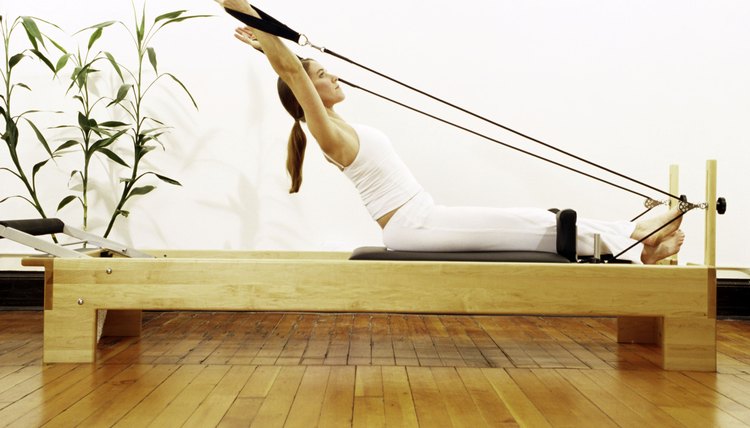Soreness After Pilates

Pilates is a system of exercise using a mat or specific machines, called reformers, that focuses on your “powerhouse,” the muscles of the abs, back and hips. Many of the movements, especially when you are starting out, seem slow and mild as you learn proper technique, so you may be surprised you feel sore afterward. Pilates often targets muscles you don’t use in other workouts, which makes it a valuable addition to your routine; but, it can leave a reminder of your workout for a day or two afterward.
About Muscle Soreness
Muscle soreness can occur immediately after a specific movement, but usually disappears quickly. You may notice an immediate ache during the criss-cross, for example, a movement in Pilates in which you lie on your back and twist your opposite elbow to your opposite knee. Delayed soreness occurs between 24 and 48 hours post exercise and can last as long as 72 hours. Feeling sore after doing Pilates is a signal that your body is adapting to a new exercise system.
Causes
The American Council on Exercise explains that muscle soreness after a workout is likely due to microscopic tears in the muscles and connective tissue that result during a workout. If you are a regular participant in Pilates classes, you may not feel sore after a workout because your body has already adapted to the exercises. You don’t have to feel sore to get benefits out of your Pilates workout, however. You should master control in the basic moves, such as the roll-up and leg circles, before increasing the difficulty and intensity. When you do up the intensity or add new movements, you are likely to feel sore again.
Pilates Intensity
If you don’t feel any soreness after your first few Pilates classes, you may want to increase your effort. Pilates, especially mat-based routines, requires you invest conscious effort into each move. If you hold back, chances are you will not get much benefit out of the moves. A quality instructor can help cue you to engage the right muscles during the exercises so you get the most out of the program.
Considerations
If you are athletic, but new to Pilates, you may not be as sore as your couch potato friend who joins you in class. If you do experience soreness that lasts longer than three days or experience severe pain, consult a medical professional. Swelling or redness in specific areas is also a sign that your soreness could possibly be an injury, not a natural result of your overexertion.
References
Writer Bio
Andrea Cespedes is a professionally trained chef who has focused studies in nutrition. With more than 20 years of experience in the fitness industry, she coaches cycling and running and teaches Pilates and yoga. She is an American Council on Exercise-certified personal trainer, RYT-200 and has degrees from Princeton and Columbia University.
